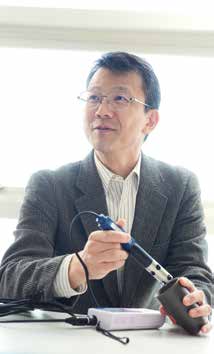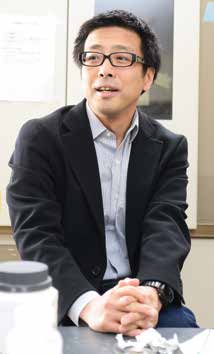Research Area : Inorganic Functional Material Chemistry
Development of new environmental purification materials based on inorganic layered materials
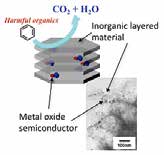
Water purification is one of the important issues of the present day. Although TiO2 is the most prevalent and practical photocatalyst for elimination of hardly decomposable organic materials, both improvement of an affinity with target materials and development of decomposition performance under visible light are required for TiO2 materials. One of the solution methods of the former is hybridization of TiO2 and an inorganic layered material. With this hybridization, the synergy effect of layered material and TiO2 can improve the decomposition performance of organic materials. In this research, we will develop an environmental purification system with high efficiency and ecofriendly by preparing hybrids of various metal oxide semiconductors and inorganic layered materials.
Development of solid oxide fuel cells (SOFCs) for various types of fuels
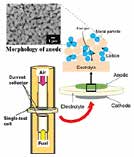
Solid oxide fuel cells are a class of fuel cells characterized by the use of a solid oxide material (ceramic material) as the electrolyte. SOFCs use a solid oxide electrolyte to conduct negative oxygen ions from the cathode to the anode. The electrochemical oxidation of the hydrogen, carbon monoxide or other organic intermediates by oxygen ions thus occurs on the anode side. In this research, we will develop new anode materials that are compatible with the supply of methane and other organic intermediate fuels.
Research Area : Inorganic Functional Material Chemistry
Study on photocatalytic self-cleaning surfaces
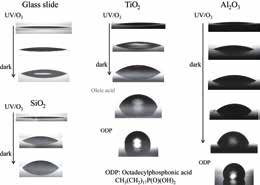
Wettability of solid surface is interesting. Also it is important for our daily life. Titanium dioxide (TiO2) surface shows super-hydrophilicity (water contact angle less than 5 degree) by the irradiation of ultra violet light. TiO2-coated materials such as glasses and tiles of buildings have been widely used as self-cleaning materials. Recently, we focus on niobium oxide-based photocatalyst as high functional self-cleaning material. We are trying to develop next environmentally friendly self-cleaning coatings.
Study on underwater super-oleophobic surfaces
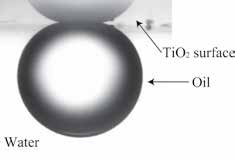
Oil wettability of solid is an important physical property of the materials. We have developing functional materials with underwater super-oleophobic surface (oil contact angle larger than 150 degree). underwater super-oleophobic mesh can be applicable as a speedy oil-water separation filter. Recently, we succeeded to develop TiO2 photocatalyst oil-water separation filter. Moreover, we are currently investigating calcium-based materials as oil-water separation filter.

